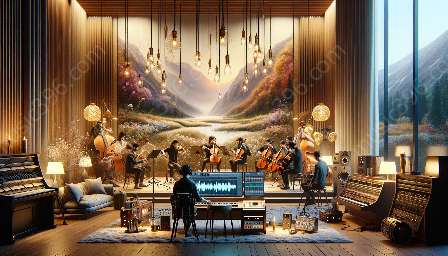Music has undergone significant changes over the centuries, transitioning from modal to tonal systems. This shift had a profound impact on the analysis of Baroque music, shaping the way it was composed, performed, and understood. In this topic cluster, we explore the historical and theoretical implications of this transition, examining its influence on both historical musicology and music analysis.
Understanding Modal and Tonal Music
Before delving into the impact of the transition, it is essential to understand the characteristics of modal and tonal music. Modal music, prevalent in the medieval and Renaissance periods, is based on a system of modes, each with its own unique set of pitches and characteristic melodic patterns. Tonal music, on the other hand, emerged during the Baroque era and is defined by the use of major and minor scales, functional harmony, and clear tonal centers.
Historical Context and Transition
The transition from modal to tonal music unfolded gradually, reflecting broader cultural and artistic changes during the Baroque era. This period saw a shift towards new forms of expression, with composers like Claudio Monteverdi and Johann Sebastian Bach exploring the potential of tonal harmony and functional relationships between chords. As tonal language gained prominence, modal conventions gradually gave way to the hierarchical organization of tonality.
Theoretical Implications
One of the fundamental impacts of this transition was on the theoretical frameworks used to analyze music. In the realm of historical musicology, scholars began to explore how tonal structures and harmonic progressions shaped the compositions of Baroque masters. This led to the development of new analytical methods and the reinterpretation of historical texts in light of tonal principles.
Harmonic Analysis in Baroque Music
Harmonic analysis plays a pivotal role in understanding Baroque music within a tonal framework. Scholars and analysts examine chord progressions, cadences, and tonal relationships to gain insights into the formal and expressive qualities of the music. By recognizing the prevalence of tonal structures, researchers can unravel the intricate harmonic language employed by composers such as J.S. Bach and George Frideric Handel.
Interplay of Melody and Harmony
The transition to tonal music also impacted the interplay of melody and harmony in Baroque compositions. As tonality became a central organizing principle, composers expanded their harmonic palette, leading to richer and more expressive harmonies. This shift had implications for music analysis, as scholars sought to understand how tonal harmony interacted with melodic lines, ornamentation, and contrapuntal textures.
Performance Practice and Interpretation
Historical musicology and music analysis are also intertwined with performance practice. The transition to tonal music influenced the way Baroque music was performed and interpreted, leading to discussions about appropriate tempos, ornamentation, and articulation within a tonal context. By considering historical treatises and period instruments, scholars gained insights into the performance traditions of the time, enriching their analytical perspectives.
Legacy and Continuing Research
The impact of the transition from modal to tonal music reverberates through the study of Baroque music, shaping how scholars approach historical musicology and music analysis. As new research methodologies and analytical tools continue to emerge, the exploration of tonal structures in Baroque music remains a vibrant area of inquiry, offering fresh perspectives on this rich musical tradition.

































